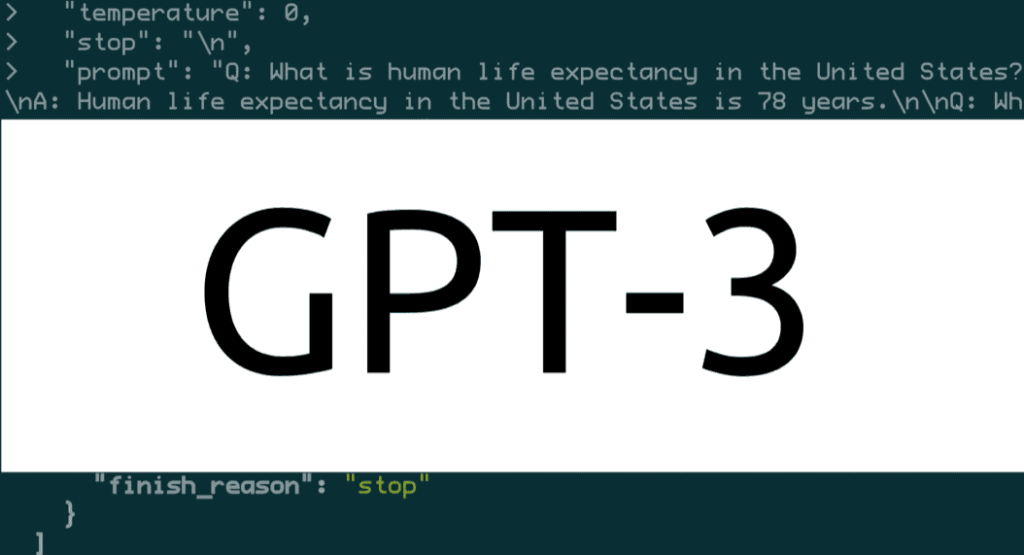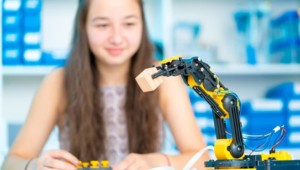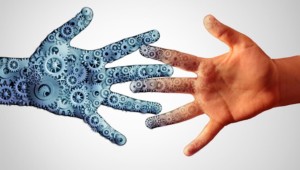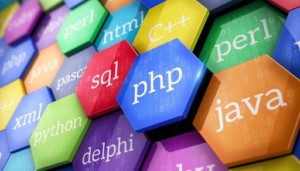Welcome To Human-Computer Co-Creation: What GPT-3 Means For Education

It’s a super auto-completer. With a little training, it’s a writer, coder, composer, translator, and puzzle solver. It’s the Swiss Army Knife of AI from OpenAI, a San Francisco R&D shop set up to guide a path to safe artificial general intelligence and funded by Microsoft, Reid Hoffman, and Vinod Khosla.
Generative Pre-trained Transformer 3 (GPT-3) is a deep learning language model that produces human-like text. The third-generation model “is the most powerful language model ever,” MIT Technology Review.
Trained by supercomputers with 175 billion parameters–an order of magnitude more than prior models–applications for GPT-3 have the potential to increase productivity and creativity including:
- Writing computer code
- Answering medical queries
- A chatbot that lets you talk to historical figures.
- A question-based search engine–like Google but for questions and answers
- Solving language and syntax puzzles from just a few examples
- Converting text from one form to another (e.g. legalese to plain English)
- Writing blog posts (see jointly authored post)
- Writing creative fiction
- Composing music
- Autocompleting images
The API for GPT-3 represents a sector advance more than a breakthrough. It performs like a clever student trying to fake their way through a course. But it’s massive memory makes it more versatile with less training than any prior model.
What Could Possibly Go Wrong?
Last week, college student Liam Poor heard of GPT-3. By the end of the week, he posted a fake blog under a fake name. “It was super easy actually,” he says, “which was the scary part.”
GPT-3 will accelerate fake news and the production of fictitious content. It will accelerate the use of biased data to reach bad conclusions. It will be used for malicious purposes.
Implications of GPT-3 for Education
After crunching massive amounts of data, GPT-3 requires less training than similar applications and will lower the barrier to producing beneficial AI-powered products. GPT-3 will be integrated into learning applications this fall making them smarter. In the next few years, most edtech products will have AI (GPT-3 and many other machine learning models) baked in making them more personalized.
In the meantime, educators should pay attention to this development. Starting in upper elementary school, it’s critical to teach digital literacy and critical consumption. Middle school is a good time to introduce AI ethics and begin the conversation about what it means to co-author with a machine.
High school leaders should create opportunities for high school students to use machine learning tools to make a difference in their community. This could happen in a computer science course, a tech class, or after school program (see AI4All).
While innovative artists have been exploring the human-machine boundary for years, 2020 is likely to go down as the widespread beginning of co-created content, art, and music–it’s a wonderful terrifying starting line.
Tools like GPT-3 expand human capability while challenging our conception of intellectual property and reshaping views on what is authentic and human-made.
For more, see:
- Deepfakes: Teaching Critical Consumption
- An Inside Look – America’s First Public School AI Program
- AI4ALL: Learning in Beta
Stay in-the-know with innovations in learning by signing up for the weekly Smart Update.






The presentation is very clear and encouraging on the part of the students and teachers.
Educators need to continue studying and reading innovations for the good of humankind.